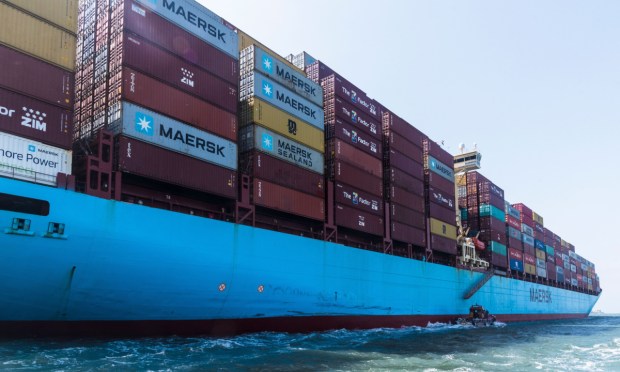Declining Consumer Spend May Deepen Container Shipping Slowdown

Danish shipping giant Maersk reported a sharp fall in second-quarter earnings on Friday (Aug. 4) as global demand for the shipping of containers by sea continues its decline.
According to CEO Vincent Clerc, customers have been reducing their inventory and there is no sign of this destocking coming to an end any time soon.
The Copenhagen-based company, one of the world’s largest container shipping businesses, had expected container volumes to decrease no more than 2.5% but now sees a drop of as much as 4%. As a result, revenue sank by 40% year-on-year (YoY), from $21.65 billion in the second quarter of last year to $12.99 billion, signaling a weak global economy and a halt on imports for many companies.
“The Q2 result contributed to a strong first half of the year, where we responded to sharp changes in market conditions prompted by destocking and subdued growth environment following the pandemic fueled years,” Clerc said, per Bloomberg. “Our case is not for a recession, but it is for a really subdued environment that will continue for the rest of this year.”
Clerc predicts that the destocking will take longer in the U.S. than in other regions, and said Maersk will invest more in North America due to its more positive GDP outlook. With a shipment of one-sixth of the world’s containers, Maersk saw box volumes fall 6.1% in the quarter while freight rates were cut by more than half.
Similarly, the hundreds of new container vessels that came to market this year contributed to the decrease in freight rates. Maersk, however, has been able to restrain from a larger plunge through cost efficiency. The company has managed to stay above expectations and has increased the lower end of its profit forecast for the year to $9.5 billion to $11 billion from its prior $8 billion to $11 billion.
The correction is expected to be prolonged and to last through year-end, Clerc said, adding that the expectation is “to see some recovery in the market in 2024 and getting back to positive growth territory.”
Container Demand and Retail Spend Go Hand in Hand
The demand for container shipping services took a nosedive after surging during the pandemic, leading Maersk to project a $26 billion drop in 2023 profits earlier this year.
The projection came on the heels of a record boom in pandemic-driven shipping and a spike in the cost of containers in 2022, during which Maersk customers, including most of the biggest retailers in the world, over-ordered products.
By the time that congestion eased, however, more goods, full warehouses and high inventory meant retailers were less incentivized to make purchases, Clerc noted in an interview with the FT earlier this year.
Moreover, macroeconomics events such as Russia’s invasion of Ukraine, Europe’s energy crisis, and the threat of a worldwide recession have resulted in belt-tightening measures in many households.
According to PYMNTS research, 74% of consumers have cut back on nonessential retail purchases to make ends meet, which is likely to have a strong impact on container demand from retailers.
The National Retail Federation lowered its U.S. consumer good import forecast for first half of 2023 in May, with the expectation that incoming ocean container volume will remain soft going into the autumn months when retailers like Walmart begin preparations for the holiday season.

